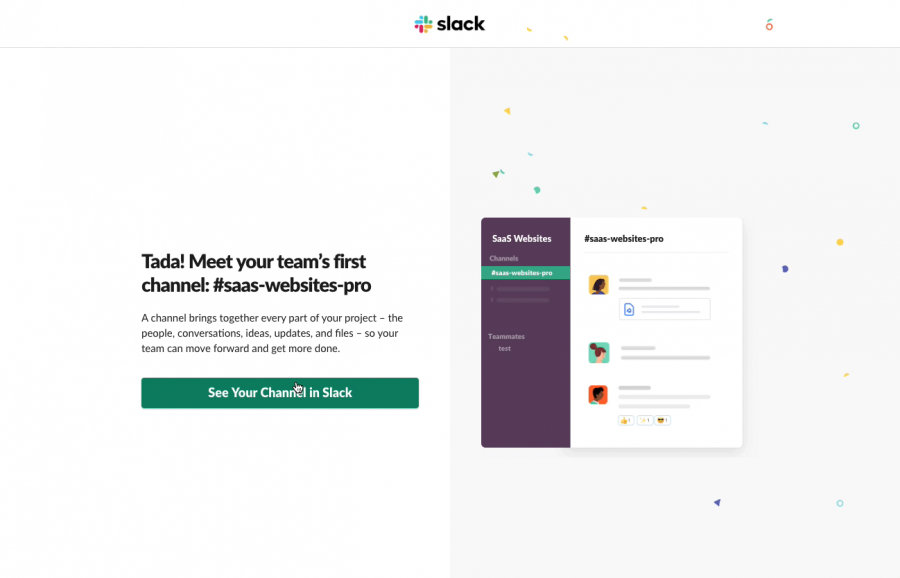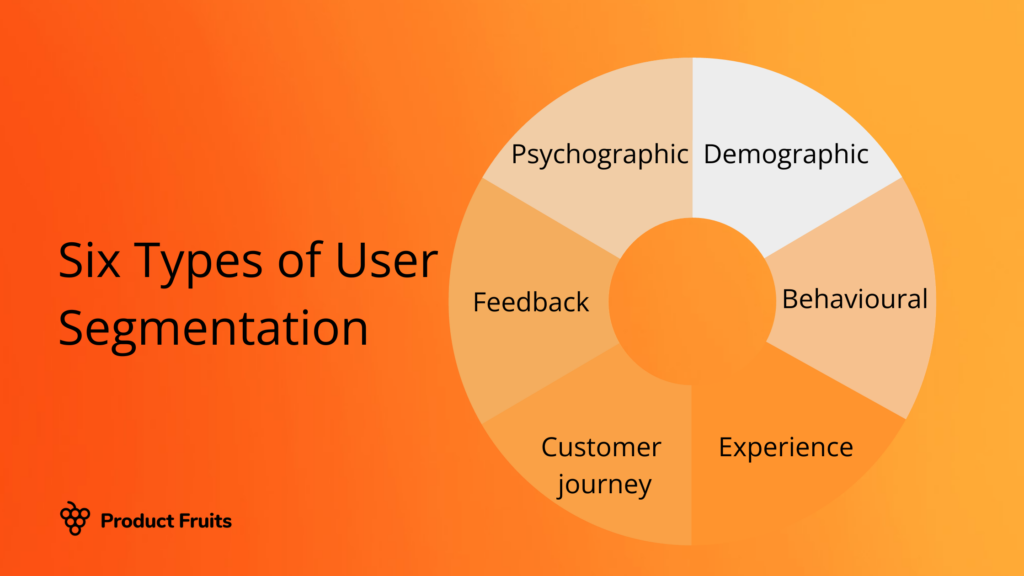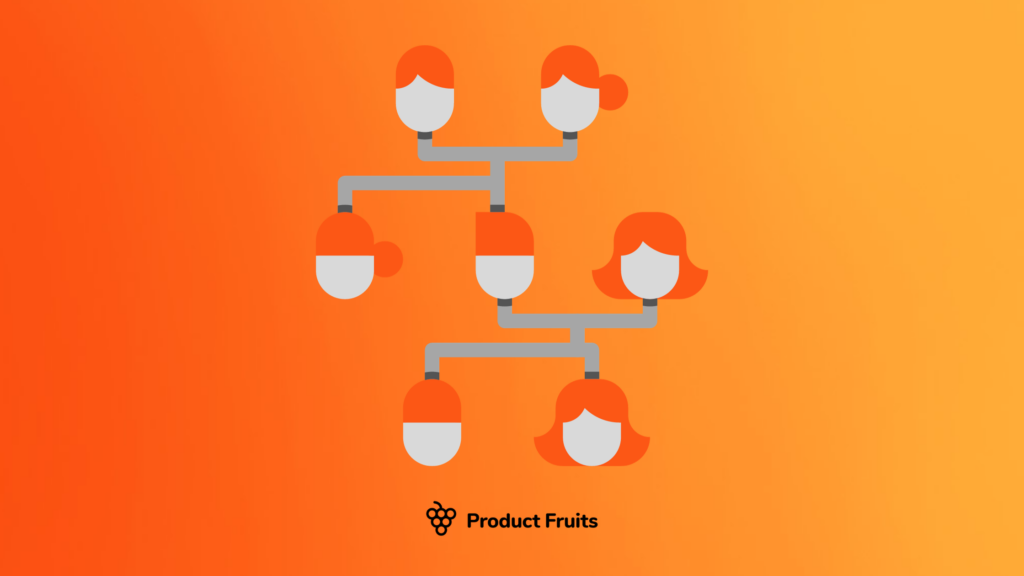
User segmentation is like placing the perfect jigsaw piece to complete a puzzle.
It means placing the user into the perfect spot for them to find the features, tools, and flows for them to succeed at their goals.
Understanding how to segment users will help your onboarding flow increase conversion, reduce churn, and delight users.
Lucky for you, we have asked onboarding experts to share their best practices for user segmentation during onboarding.
User segmentation in user onboarding refers to the process of categorizing and grouping users based on specific characteristics, behaviors, or demographics.
The goal of segmentation is to divide a user base into distinct segments to create a tailored user onboarding experience. This is because segmentation allows onboarding flows to cater directly to user needs, over showing generic tours, they can be specific and highlight relevant features.
By segmenting users, organizations can tailor their onboarding strategies, messaging, and experiences to effectively engage and guide different user groups toward the successful adoption and use of a product or service.
Vaibhav Kakkar, CEO of Digital Web Solutions says “By implementing user segmentation during onboarding, businesses can enhance user engagement, improve user satisfaction, and increase the likelihood of users successfully adopting their products or services. It allows for a more personalized and targeted approach, ensuring that users receive the information and support they need to achieve their goals.”
User segmentation is more than just grouping users based on certain characteristics. You have to keep in mind the goal of the user journey, and then choose which type of segmentation will be the most effective to create a strong user journey.

Here are some ways to segment your users:
Use case: This is especially helpful when companies need to segment offers by location.
Use case: This helps you target users who have stopped engaging, allowing you to nudge them to explore helpful features.
Use Case: Use onboarding tools to motivate users to fulfill a set of tasks.
Use Case: Helps avoid onboarding overwhelm. This is especially important for analytic tools, or platforms with a high number of functionalities. Slowly educating users by knowledge level makes sure users can learn tools at their own pace.
Use Case: Send out relevant offers and onboarding flows for users who are already familiar with your product.
Use case: This segmentation helps address specific user concerns and improve the onboarding experience.
However, as Suraj Nair of SocialPilot says “The most effective practice involves combining demographics, behavior, and preferences. This holistic approach allows for nuanced user categorization, enabling a more refined onboarding experience.”
By employing these segmentation techniques, organizations can better understand their users and deliver personalized onboarding experiences that drive user engagement, satisfaction, and long-term success.
User segmentation during onboarding helps create tailored flows that cater directly to your user’s individual needs.
The more tailored your onboarding, the more you’ll be able to show your platform’s value. In turn, that means less churn and more retention. This is because your platform caters directly to each user’s goal, and onboards the directly — no fluffy content.
SocialPilot is a great example of the success behind segmentation. Suraj Nair shares that thanks to their user segmentation strategy, they have had “ a 20% increase in activation rates and a 15% decrease in churn. By addressing specific user needs early on, we’ve seen a notable boost in user satisfaction and long-term retention.”

Understanding how to segment users to fit your platform can be overwhelming. The best approach will depend on your platform’s needs and functionalities.
Personalize all onboarding and educational material to each of your user segments. You want to make sure that all the messaging comes across homogeneously and relevant to their needs.
To do this, create personal tutorials, and interactive walkthroughs for each user segment for each product feature. As Alexa Stimpfel, from the Shoe Fairy adds, personalized content allows for:
“delivering relevant content and updates to specific user groups, maximizing user satisfaction and retention. By sharing their experiences and insights, product managers and onboarding specialists can collectively develop strategies that optimize user onboarding and segmentation, ultimately driving product success.”
Consider organizing your onboarding and marketing content into categories. That way, when it comes to user communication, you’ll be able to come up with appropriate and relevant messaging.
A little warning: Always keep all communication in line with your brand guidelines.
Take a peek: 6 Experts reveal how to enhance brand strength during user onboarding
User experience will determine how much hand-holding users will need during the onboarding experience. Matching users in their learning curve means you can educate them appropriately without jumping ahead or being repetitive.
For example, Keboola was able to accelerate its user onboarding and improve feature adoption by separating its users into experience groups. Each onboarding flow shows different in-app demos and tours. This allows users to slowly ramp up their learning through different onboarding material.
Read how Keboola managed its user segmentation and increased its trial conversion rate.
Another approach is to use progressive profiling. Benedict Ang, from Total Shape, explains the benefits “Instead of bombarding users with an exhaustive set of onboarding tasks upfront, we stagger the process. We gradually collect information and guide users through the platform at a pace that aligns with their comfort level. This not only prevents overwhelming users but also allows for more accurate segmentation as we learn more about their preferences and behaviors over time.”
To achieve this type of differentiation during the user onboarding journey. Vaibhav Kakkar suggested, “Provide targeted tutorials, resources, and guidance to each user segment, ensuring that they receive the most relevant and helpful information during the onboarding process”.
Segment your users immediately, that way the whole onboarding experience is tailored to their needs.
For example, Young Pham, Co-Founder of BizReport, implemented user segmentation right at the start to help users find value immediately. “We’ve designed different paths within the onboarding process to cater to the diverse needs and preferences of our users. For instance, a new user interested in personal finance may experience a slightly different onboarding journey compared to someone exploring investment-related content. The goal is to provide a customized experience that aligns with the user’s specific interests and objectives.”
But, segmentation doesn’t end there.
Once users start to navigate your platform, it’s good practice to keep an eye on their behavior. It’ll give you a clue into what features they prefer. In the future, that means you can tailor announcements and product tours that closely align with features that most interest them.
For example, consider Netflix. The more you consume their content, finish shows, and rate movies, the more they understand your preferences and can recommend shows that you’ll enjoy.
Involve different departments to work together to create a smooth onboarding experience. That way, all efforts in terms of marketing content, development, and sales can work in unison to provide the best experience, learning from each other’s strengths and experience.
Alexa Stimpfel reiterates the importance of product managers and onboarding specialists working together to define user segments “Product managers and onboarding specialists can collaborate to share best practices in these areas, fostering a deeper understanding of their target audience and enhancing user engagement. By leveraging user data and analytics, they can identify key user segments and tailor onboarding experiences to meet their specific needs.”
It’s good practice to hold regular meetings with department heads to share the results of customer feedback, client requests, and the current conversion rates. That way the onboarding process can be continuously optimized.
The more data collected, the better user understanding and ability to onboard users correctly.
Collect through user surveys, as well as their behavioral data. This will give a fuller picture of their expectations and objectives.
Understanding the user from various data points allows for a more nuanced onboarding experience. Young Pham, reinforces the value with “Explicit data includes information provided by users during the registration process, while implicit data involves tracking user behavior on the platform. This comprehensive approach helps us create nuanced segments and refine our onboarding strategies accordingly.
User segmentation means nothing if you don’t have the right tools to actually do something with that data.
Product Fruits is an onboarding tool that powers your user segments. It provides a full toolbox of onboarding features to add to your platform, with no coding needed.
It works as an invisible layer, where you can easily click and add tours, welcome cards, surveys, hints, and help centers easily. Each tool is customizable, which means you can align features with your brand style AND condition to appear for different user segments.
Interested in learning more about user segmentation for a successful onboarding practice? Book a free call with our onboarding specialists.